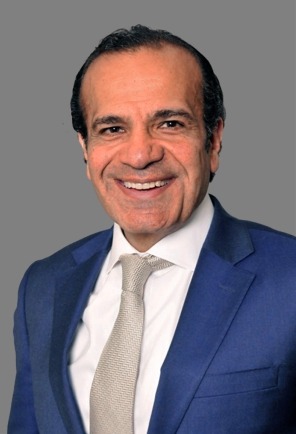New Flexibility Added to Paycheck Protection Program (PPP)
Today, the President signed the Paycheck Protection Program Flexibility Act of 2020, H.R. 7010 (PPPFA), which provides greater flexibility for the recipients of Small Business Act loans under the Paycheck Protection Program (a PPP loan). The following is a summary of the key relevant provisions of the law. Unless specified to the contrary, the provisions of the law apply to all PPP loans, including those that have been previously issued.
Extended Maturity Date for Loans
As a result of the PPPFA, all PPP loans that are made on or after today, will have a minimum maturity of five years. With respect to PPP loans that were made prior to today, the PPPFA does not impact the maturity date. However, it does permit lenders and borrowers to mutually agree to modify the terms of a covered loan to conform with the extended maturity provided for new PPP loans.
Extension of Safe Harbor to Rehire Employees
Under the CARES Act, borrowers could qualify for the Full-time Equivalent Employees Reduction Safe Harbor, which exempted borrowers from the reduction in forgiveness amount due to a reduction in full-time equivalent employees, if the full-time equivalent employees were restored by June 30, 2020. The PPPFA extended the safe harbor deadline so that borrowers will be eligible for the safe harbor if the reductions in employee levels are restored by December 31, 2020.
Extension of Deadline to Use Proceeds
Under the CARES Act, borrowers had eight weeks to use the loan proceeds (the covered period) and be eligible for forgiveness. The PPPFA extended the covered period to the earlier of (1) the date that is 24 weeks after the date of origination of the loan or (2) December 31, 2020. While this extension will apply to all PPP loans, the PPPFA allows recipients that received a loan prior to today to elect to have the covered period end on the date that is 8 weeks after the origination date of the loan.
Exemption for Reduction of Full-time Equivalent Employees
Under the PPPFA, borrowers that have a reduction of full-time equivalent employees will still be able to qualify for full loan forgiveness for the period beginning on February 15, 2020 and ending on December 31, 2020, if they can document in good faith that:
- They are unable to rehire individuals who were employees on February 15, 2020 and
- They are unable to hire similarly qualified employees for unfilled positions on or before December 31, 2020.
Exemption for Inability to Return to the Same Level of Business Activity
Borrowers will still be able to qualify for full loan forgiveness for the period beginning on February 15, 2020 and ending on December 31, 2020 if they can document, in good faith that:
- They are unable to return to the level of business activity at which they were operating before February 15, 2020 and
- That inability is due to compliance with requirements established or guidance issued by the Secretary of Health and Human Services, the Director of the Centers for Disease Control and Prevention, or the Occupational Safety and Health Administration during the period beginning on March 1, 2020, and ending December 31, 2020, related to the maintenance of standards for sanitation, social distancing, or any other worker or customer safety requirement related to COVID–19.
Change in Permitted Percentage of Non-Payroll Costs Paid with Loan Proceeds
Under the CARES Act, borrowers were able to use up to 25% of their PPP loan proceeds on eligible non-payroll expenses (e.g., mortgage and pre-existing debt interest, rent, and utilities). The PPPFA modified this by allowing borrowers to use up to 40% of their PPP loan proceeds on eligible non-payroll expenses.
It is noteworthy, that as drafted, the PPPFA can be interpreted as eliminating partial loan forgiveness. In other words, if a borrower uses less than 60% of the loan proceeds for payroll costs, then the borrower would be ineligible for any loan forgiveness. Prior to the PPPFA being signed into law, this was an issue identified by Congress (though not addressed) and so it is anticipated that it will be addressed in the next COVID-19 related package or through SBA rulemaking.
Extension of Deferral Period
Under the CARES Act, the payment of principal, interest, and fees could be deferred for a period of not less than six months, and not more than one year. The PPPFA modifies the deferral period such that:
- If the borrower applies for forgiveness of the loan within 10 months after the last day of the covered period, then the deferral period ends on the date on which the borrower receives notice of the amount of forgiveness from the lender.
- If the borrower does not apply for forgiveness of the loan within 10 months after the last day of the covered period, then the deferral period ends on the date that is 10 months after the last date of the covered period.
Eligibility for Payroll Tax Deferrals
Under the CARES Act, employers and self-employed individuals can defer the employer’s portion of Social Security taxes that are due from March 27, 2020 through December 31, 2020 to the following dates:
- 50% deferred until December 31, 2021; and
- 50% deferred until December 31, 2022.
However, if the employer or self-employed individual receives a PPP loan and has any portion of it forgiven, then the employer or self-employed individual becomes ineligible to defer any Social Security tax that becomes due on or after the date that the employer receives notice of the loan forgiveness. Any Social Security tax deferred prior to the employer receiving notice of the loan forgiveness will retain its deferred status and will be payable on the dates stated above.
The PPPFA modifies this rule to provide that all employers and self-employed individuals are eligible for the full amount of deferral regardless of whether they had any portion of a PPP loan forgiven.
A&M Taxand Says
The highlights above are the key relevant provisions of the PPPFA. While the PPPFA is taxpayer-favorable, it highlights that the state of the law with respect to past COVID-19 provisions remains unsettled, even after guidance is issued by the Small Business Administration and the Treasury Department. This is also evidenced by the proposed HEROES Act, which passed the House on May 15, 2020 and is discussed in greater detail here. A collection of our firm’s insights relating to COVID-19 can be found here. Please contact your A&M professional if you have any questions regarding the PPPFA or other COVID-19 legislation.






